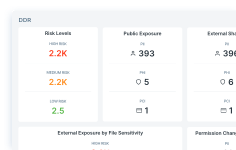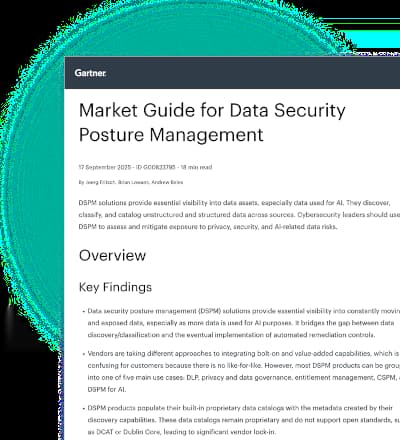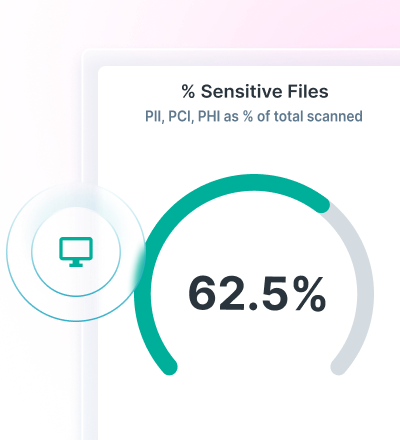Secure Web Gateway (SWG): The Complete 2025 Guide
0 min read

Brandon Keller
What is a Secure Web Gateway?
A secure web gateway (SWG) is a security technology designed to protect organizations, networks, users and devices from internet-related threats. SWGs perform two primary functions: they filter out unsafe content from web traffic, and they block risky or unauthorized user behavior.
Why Organizations Use SWGs Now
- Cloud & SaaS everywhere: Most work now traverses the public internet.
- Encrypted by default: Threats hide in HTTPS; selective TLS/SSL decryption is required to see them.
- Hybrid/remote users: Consistent protection is needed on and off the network.
- Regulatory pressure: Enforce acceptable‑use and data handling (PCI, HIPAA, GDPR) at the web layer.
How a Secure Web Gateway Works
A secure web gateway may be a software solution, a cloud-based service or a physical appliance. Positioned at the edge of a network, SWGs inspect incoming and outgoing traffic, using company policy to determine whether web traffic should be allowed, blocked or quarantined. Features of a SWG may include:
- URL filtering
- Application control
- Antivirus software
- HTTPS inspection
- Anti-malware detection and blocking
- Access control
What are Key Capabilities of a Secure Web Gateway (SWG)?
When evaluating a SWG solution, its capabilities should align with an organization’s goals for stopping data loss on the web. Below are key capabilities of a SWG solution from Forcepoint, Forcepoint Web Security:
- Control Sensitive Data on the Web: Identify and block potentially risky exfiltration attempts or data leaks anywhere on the web.
- Stop Web-based Threats: Forcepoint’s Advanced Classification Engine (ACE) prevents both zero-day and known ransomware attacks.
- Uncover and Monitor Shadow IT: Locate unsanctioned web and SaaS activity and safeguard emerging applications such as ChatGPT and other generative AI tools.
- Deliver Consistent Performance: Provide users with safe and reliable access to the internet, wherever they're located.
- Safely Access Risky Websites: Provide additional threat protection through a Forcepoint Remote Browser Isolation (RBI) integration with Forcepoint Web Security. RBI renders potentially risky websites in a container to prevent malware attacks from launching.
- Defend Against Advanced Threats: Expand threat detection capabilities through the Forcepoint Advanced Malware Detection and Protection (AMDP) integration with Forcepoint Web Security. AMDP quickly detects known and unknown malware threats and zero-day exploits to keep data secure.
SWG Use Cases
Below are examples of potential SWG uses cases for organizations to get visibility and control over data and traffic anywhere on the web.
- Remote & hybrid users: Enforce acceptable‑use for on and off‑network users.
- SaaS governance: Limit risky actions (e.g., external sharing, uploads of sensitive files).
- GenAI controls: Safely enable use of Generative AI services.
- Streamline compliance: Pre-defined and customizable reports make it easy to demonstrate compliance to auditors.
SWG vs. Related Technologies
Below is a summary of how SWGs compare against other security controls:
- SWG vs. firewall: Firewalls govern network flows; SWGs govern web and app usage with content inspection and user/app‑aware policy.
- SWG vs. proxy: A proxy is a mechanism; a SWG is a security policy stack that often uses a proxy.
- SWG vs. VPN: VPN provides private connectivity; SWG inspects internet‑bound traffic and enforces data/acceptable‑use policies.
- SWG vs. CASB: CASB applies deep, app‑specific controls (API/inline) for sanctioned SaaS; SWG covers the broader web and apps; they’re complementary.
SWG Deployment Best Practices
Consider these secure web gateway deployment best practices when evaluating SWG solutions. Keep in mind that these best practices serve as examples and may vary depending on specific needs for organizations or solution capabilities.
- Start with identity: Tie policies to users/groups and device posture.
- Tune acceptable‑use: Begin with warn/coach, then block where risk is clear.
- DLP enforcement: Enable DLP enforcement and classification tagging.
- Measure user experience: Monitor latency and hit counts; adjust policies.
Why Forcepoint for SWG
Forcepoint Web Security secures and fosters digital innovation and productivity by protecting traffic and data on the web from ransomware and zero-day threats. It also helps organizations get visibility and control over data and traffic anywhere on the web with high-speed performance users expect.
Discover more on how to extend data security to the web with your secure web gateway solution. See how Forcepoint Web Security enables organizations to protect data within any web application.
Frequently Asked Questions
Why do web security solutions matter?
Web security solutions, like a SWG, have become an indispensable part of the security stack as threats become more sophisticated and IT environments more complex.
The traditional network perimeter has virtually disappeared, thanks to major IT transformations like cloud computing, BYOD, hybrid workforces and reliance on SaaS applications. Legacy web security solutions that require all traffic to be routed through a central hub for security inspection can add severe latency to network connections, hindering productivity and limiting competitiveness.
What is a web security appliance?
A web security appliance helps protect organizations and users from internet-related threats such as malware, viruses, spoofed websites, phishing attacks and more.
Web security appliances can also help prevent data leaks, control application usage, improve visibility of web activity and enforce security policies across the organization.
What are the benefits of a secure web gateway product?
With SWG technology, organizations can:
- Control sensitive data on the web
- Stop web-based threats
- Uncover and monitor shadow IT
- Deliver consistent performance
- Securely enable AI

Brandon Keller
Read more articles by Brandon KellerBrandon is a Multimedia Content Marketer, driving content strategy and development across Forcepoint platforms. He applies his enterprise marketing experience to help organizations adopt industry-leading security solutions.
- Secure Web Gateway Product Page
In the Article
 Secure Web Gateway Product PageLearn More
Secure Web Gateway Product PageLearn More
X-Labs
Get insight, analysis & news straight to your inbox

To the Point
Cybersecurity
A Podcast covering latest trends and topics in the world of cybersecurity
Listen Now









